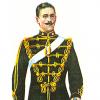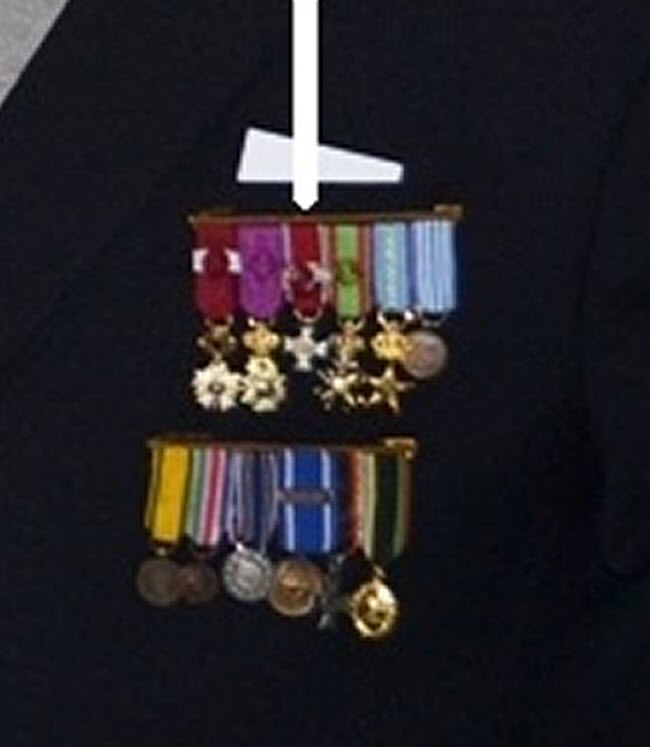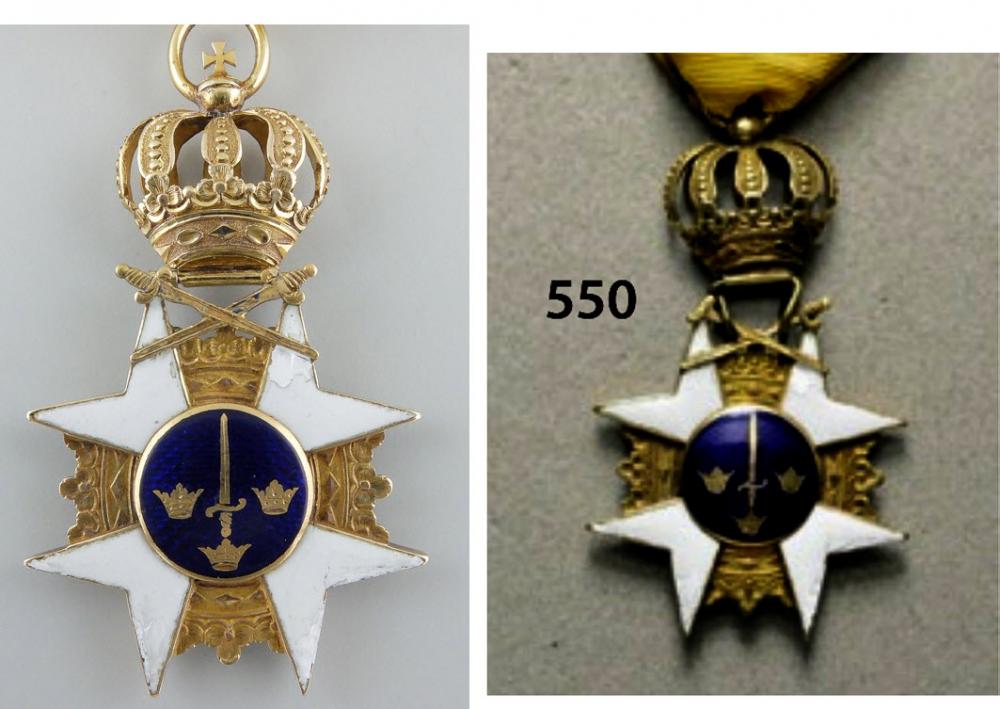-
Posts
574 -
Joined
-
Last visited
-
Days Won
2
Content Type
Profiles
Forums
Blogs
Gallery
Events
Store
Everything posted by Trooper_D
-
These are truly wonderful photos, Paja. Thanks for posting them. This is a subject of great interest to me and an area I have collected in. However, I have had a look at my postcards of the manoeuvres and I have nothing after 1908, sadly (a gap I need to fill). As a general point, military attachés of the period deserve more study on this board, I think, as they usually present a dazzling array of different uniforms in such a 'confined space', if you know what I mean. They also tended to be interesting characters in their own right. None more so than the US attaché, Bentley-Mott, who seems to have had the job (probably at his own expense, I suspect) for most of the Century to date. I may start a separate thread on him, when I have time.
-

Austria-Hungary Karl Truppen Kreuz ?
Trooper_D replied to Bayoswede's topic in Austro-Hungarian Empire
Bayern I love anomalies like these (I hadn't come across Slatin Pasha, before) as they are amongst the things which make military history interesting for me, so thank you for posting them. -

Identifaction off a mini medal
Trooper_D replied to Guy's topic in Northern European & Baltic States
-
I am sure that you are right about the date of the CDV. There was a big redesign of full dress uniforms in the 1850s (for example, hussar regiments changed from a dolman with multiple rows of lace to the more-familiar longer German style tunic with six rows of lace - as shown in my avatar); thereafter there were no major changes other than things like the height of collars etc. So these illustrations give a good indication of cavalry uniforms for the second half of the century.
-
I would rather agree with this notion! There is a possibility that it is a yeomanry regiment uniform but, against that idea, this uniform looks well used whereas the yeomanry soldiers, being part-time, would only have worn their uniforms once or twice a month (if that) as opposed to on a daily basis. For your interest, here are some nice illustrations of Dragoon Guard and Dragoon Other Rank uniforms of the Victorian era, http://www.uniformology.com/UIDSPEC-07.html and the corresponding uniforms for Hussar regiments http://www.uniformology.com/HUSSARS-07.html Both links are to uniforms of regular army cavalry regiments, not part-timers, of course.
-
I'll answer the easy question first, GreyC. The 'lanyard' is actually what are known as 'lines'. The end which was not pinned to the breast was attached to the headgear and their purpose was to ensure that the busby or czapka wasn't lost if it fell off in a charge or other engagement. In answering that, I may have answered your question as to whether it is cavalry or not (the Royal Horse Artillery, because they also wore busbies, also had lines but I don't see their flaming bomb badge on the collar). At least, I think that it was only certain cavalry regiments who wore lines but others will qualify this, I'm sure. My problem is that I don't recognise the tunic as being in any way related to Hussar or Lancer regiments the undress tunic for each at this time being a stable jacket, as far as I am aware. It almost looks like a Dragoon tunic but I would have expected an extra small loop at the cuff end of the Austrian knot. Hopefully, others will cast more light on this.
-

Kingdom of Egypt (1922-1953)
Trooper_D replied to Egyptian Zogist's topic in Middle East & Arab States
You can say that again!!* Now you have revealed who the 'midwife' was, I can understand why * (from my memory of a visit seven or eight years ago) -
Good advice, Bayern - this page, in general http://www.mlorenz.at/Bewaffnete_Macht/08_Generalitaet/08_Generalitaet.htm and this image, in particular
-
Thanks, Tony, these labels are always interesting to see.
-
Tony Would it be possible to show a photo of the maker's label, which is just visible in this image, please?
-
Welcome, NykleD. No apologies required. That's the good thing about this forum: threads are added to over the years as more and more information becomes available, making this site a wonderful repository of knowledge. Thanks for bringing the National Archive record to our attention. It's a shame that it only cover the period 1800-1804. Mike, do you mean by this - if you can remember at this distance in time - that 2nd Regiment of Hussars didn't exist or that they were not at Waterloo? I suspect the latter as we know from the National Archive record found by NykleD (in post #9) that Portegies was in the 2nd Regiment of Hussars King's German Legion. However it covers his service from 1800-1804 so his presence at Waterloo isn't yet sourced other than the reference in the book NykleD found, it would seem.
-

What does M.I.R.S. stand for British Intelligence WW2?
Trooper_D replied to GreyC's topic in World War II 1939 to 1945
Thanks for casting more light on this interesting - if somewhat arcane - subject, GreyC. -

What does M.I.R.S. stand for British Intelligence WW2?
Trooper_D replied to GreyC's topic in World War II 1939 to 1945
Thanks for that clarification, GreyC. You are, of course, right. It is now called The Grand Hotel, http://www.thegrandattrafalgarsquare.com/ I am intrigued by the address on the document you have linked to because the only references I can find on the Internet to the Hotel Victoria, in this connext, are to Room 238 being used by SOE for interviews of prospective agents. I can find no mention of MIRS being there. Further research required, perhaps. -

What does M.I.R.S. stand for British Intelligence WW2?
Trooper_D replied to GreyC's topic in World War II 1939 to 1945
I've been thinking about this, GreyC, and am slightly puzzled. I have never heard of 'Victoria Hotel' and I wonder if it meant St Ermine's Hotel, which is in the Victoria (SW1) district of London. It has been known by this name (St Ermine's) since its founding in 1899, I believe, and certainly since the Ewardian period. You may know this already but others reading this thread might be interested to know that the hotel is still going and is a nice place to stay in London. They have some information about their history here, http://www.sterminshotel.co.uk/about/our-history/ and here is a bit more detail about SOE and MIRS working together at the hotel during the war http://www.thehistorypress.co.uk/articles/st-ermins-hotel-and-the-origins-of-soes-section-d/ If you read through this second link, you will note that the Russian double-agent Guy Burgess worked there and so I wonder, when you write that your document was "copied and given to the Russians in 1943", whether it was actually passed to the Russians by Burgess as part of his spying effort for them! Do you actually own this document or have you seen it online? -

What does M.I.R.S. stand for British Intelligence WW2?
Trooper_D replied to GreyC's topic in World War II 1939 to 1945
Military Intelligence Research Section This link will give you a start in your research, GreyC, http://discovery.nationalarchives.gov.uk/details/r/C384580 -

Order of the Crown Romania "with swords" WHY !!
Trooper_D replied to lambert's topic in Central & Eastern European States
I wonder if Lambert's question relates to the fact that the swords, in themselves rough-looking, are really quite crudely attached and look as if they have been subsequently added to a medal issued without swords. The corollary might be, does this affect its value or collectibility? -
Am I being harsh in thinking that the enamel on this example is really rather inferior, particularly when compared to the examples in post #6? I wonder how it justifies Spink's assessment very fine?
-

Imperial Russia List of recipients of St George cross - Imperial Russia
Trooper_D replied to AlexHK's topic in Russia: Imperial
Karas Thank you for these additional details about Marquis Georgii Fedorovitch degli Albizzi, who seems to be one of those quirks of Military History which make our hobby so interesting! -

Imperial Russia List of recipients of St George cross - Imperial Russia
Trooper_D replied to AlexHK's topic in Russia: Imperial
Thank you, Karas, for this fascinating account of the action in which your great-uncle won the St George Cross. I must confess I had a bit of difficulty understanding the details but one jumped out at me: why on Earth was 'the Italian Marquis GF. Dalli Albizzi' present at this skirmish? -

Sweden SWEDEN ORDER OF THE SWORD - OLD MODEL
Trooper_D replied to Graf's topic in Northern European & Baltic States
Thanks for that confirmation, Michael. It was my last hope for a rational explanation -

Sweden SWEDEN ORDER OF THE SWORD - OLD MODEL
Trooper_D replied to Graf's topic in Northern European & Baltic States
What a thought-provoking example, Great Dane. I suppose I can persuade myself to see differences between the two crosses but, they are so alike (and I think I can see one or two additional similarities you didn't highlight), is it possible that the Chapter of the Orders misunderstand your query? Assuming for the moment that they didn't, how can we account for two crosses with almost identical flaws and dings? Do we think that they are flaws in the manufacturing process which are common to all crosses produced at the time, perhaps? -

Sweden SWEDEN ORDER OF THE SWORD - OLD MODEL
Trooper_D replied to Graf's topic in Northern European & Baltic States
I'm certain of it, Christian. Even though the image in the auction catalogue isn't the best, by exaggerating the tones, it is possible to see most of the enamel damage on the eMedals example, as is apparent in the attached comparison. This is most obvious on the 'S' on its side shaped edge of the repair work on the upper right arm of the cross.




